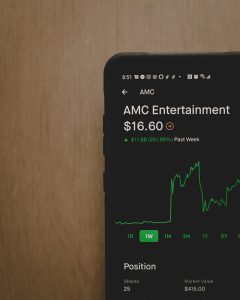Forex trading is one of the most lucrative financial markets in the world, with trillions of dollars being traded every day. As a trader, one of the most important things you need to learn is how to identify and trade off of resistance levels. Resistance is the price level at which the market tends to stall or reverse. In this article, we will delve into what to do when price approaches resistance.
When trading forex, it is important to have a plan in place for when price approaches resistance. There are a few different strategies that traders can use, depending on their trading style and risk tolerance.
The first strategy is to simply wait and see what happens when price approaches resistance. This is a conservative approach that involves not taking any action until the market shows a clear direction. If the market breaks through the resistance level, then the trader can consider entering a long position. If the market fails to break through the resistance level, then the trader can consider entering a short position.
Another strategy is to enter a short position when price approaches resistance. This is a more aggressive approach that involves anticipating a reversal and entering a trade before the market actually shows a clear direction. The idea is to take advantage of the resistance level and profit from a potential reversal.
A third strategy is to enter a long position when price approaches resistance. This is a contrarian approach that involves going against the prevailing trend. The idea is to take advantage of a potential breakout and profit from a continuation of the trend.
Regardless of which strategy a trader chooses, there are a few key factors that should be considered when price approaches resistance.
The first factor is the strength of the resistance level. Strong resistance levels are more likely to hold and cause a reversal, while weak resistance levels are more likely to be broken. Traders can use technical analysis tools such as trend lines, moving averages, and oscillators to identify strong and weak resistance levels.
The second factor is the overall trend of the market. If the market is in an uptrend, then traders should be more cautious when approaching resistance levels, as the market is more likely to reverse. If the market is in a downtrend, then traders should be more aggressive when approaching resistance levels, as the market is more likely to continue the trend.
The third factor is market sentiment. If the market is bullish, then traders should be more cautious when approaching resistance levels, as sentiment can change quickly and cause a reversal. If the market is bearish, then traders should be more aggressive when approaching resistance levels, as sentiment is more likely to continue in the same direction.
In addition to these factors, traders should also consider their risk tolerance and trading style. Conservative traders may prefer to wait for a clear direction before entering a trade, while aggressive traders may prefer to enter a trade before the market shows a clear direction.
In conclusion, trading forex requires a solid understanding of resistance levels and how to trade off of them. When price approaches resistance, traders should consider the strength of the level, the overall trend of the market, and market sentiment. By having a plan in place and being mindful of these factors, traders can increase their chances of success and minimize their risk.





